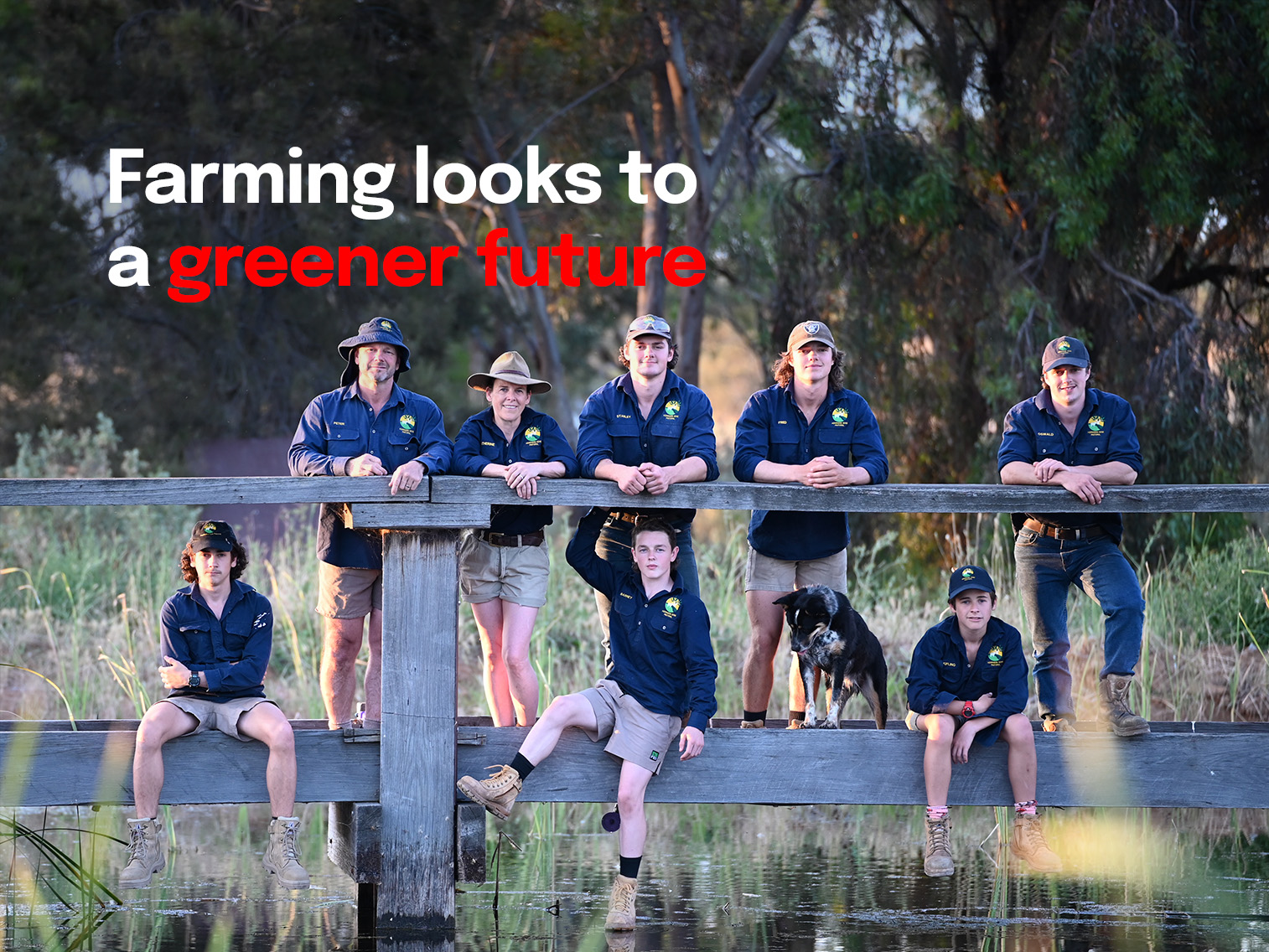The latest NAB Regional & Agribusiness webinar provides insights on the Australian & Global Economies, and a regional and rural property update. Watch the webinar here.


How NAB’s business finance for green equipment helped the Herrmanns build up both productivity and resilience against climate and commodity risk.

Like all producers, the Herrmann family are deeply invested in protecting the future of their livestock, their land and their assets.
“[Farming] can be a tough industry, but there’s great camaraderie,” Katherine Herrmann says. “We share what we learn, and we also learn a lot from others.”
As they’ve learned, the Herrmanns, from Murrami in the NSW Riverina region, have developed farming methods that not only provide resilience against environmental and financial risks, but have increased their productivity, reduced their labour inputs and improved their sustainability.
The Herrmanns are well-known across the Riverina. Peter is president of the Australian Ricegrowers Association, Katherine is project director of the redevelopment of Leeton’s heritage-listed Roxy Theatre. In addition to rice, mixed cropping and walnuts, the family run a flock of some 4,000 sheep, fattening them in pasture and pens before on-selling.
It’s the sustainability of their sheep operation that’s drawing attention.
The family have recently used NAB’s green equipment finance to take their sustainability to the next level – a green equipment finance-funded solar installation has delivered energy independence, minimised their energy costs and reduced their carbon footprint while allowing them to kickstart other projects.
“The solar energy we installed with the Green Loan has allowed us to mechanise a lot of our approaches,” Katherine explains.
That includes the supporting infrastructure for their gravity-fed irrigation system and an on-farm feed production and pelletisation system.
“It’s what we call free-choice sheep: they’re either in an intensive feeding arrangement or [on] pasture. All the feed that we create here is directly used in our operation,” Katherine says, noting that the farm’s food miles are very low.
“We’ve got an automated feeding system for our sheep, which reduces a lot of transport and our diesel usage.”
Animal wellbeing is at the core of the Herrmanns’ operation. But rather than this resulting in a more labour-intensive approach, it means a high degree of automation and tracking. Each animal can be independently monitored and the Herrmanns will remove one from the mob if it looks like it would prefer a little time alone.
“Our test, in terms of sustainability, is how well the sheep are doing,” Katherine says.
Each sheep’s weight is also tracked automatically, with feed and supplements delivered based on this monitoring.
According to Peter, precision feeding means that “there’s no wastage and they’re not stomping all over their feed”.
“Making our automated systems better allows us to do more with the same amount of resources,” he says. “But we don’t just keep the money saved; it all gets reinvested.”
Feed optimisation results in healthier, happier animals. It also means quicker weight gain. And the benefits of that go beyond dollars saved or additional revenue earned – more efficient digestion means the animals produce less methane, which lowers their environmental impact.
While the Herrmanns are interested in profitability, product quality and animal wellbeing, the impact of their sustainability practices goes beyond that.
Flow-on effects, as well as carefully planned land care initiatives, have led to improvements in land quality and drought-proofing.
“We haven’t got compaction issues, so the ground’s better able to absorb moisture,” Peter explains. “We take in 100 per cent of the rain we get, rather than it running off.”
Having experienced the Millennium Drought as irrigators, the Herrmanns are conscious of the impact that a few consecutive years of El Niño can have.
A new system of ‘drought pens’, which include automated feed lines and sprinkler systems, will help keep livestock healthy and productive during dry years. It will also allow the Herrmanns to add a few head when neighbouring farmers need to destock, adding to the resilience of the community.
While the Herrmanns’ sustainability initiatives have quickly paid dividends, they initially had difficulty securing the capital to kick-start operations – non-specialist lenders couldn’t understand what they wanted to achieve. So in 2018, the couple approached NAB, where the bank’s mix of agricultural and credit analysis expertise came to the fore.
“Business banking’s about demonstrating three things on both sides,” Peter says. “Cash flow, capital and character.”
Julieanne Lawrence, NAB Agribusiness Manager, says that the Herrmanns have all three in spades, and make their banker’s work easy by having the data to back it all up.
“They’ve got the information management systems in place to actually prove what they’re doing. They’ve invested in making this very efficient, very traceable information.”
“It’s a wonderful story, but they can also demonstrate that it’s true,” Julieanne adds.
For the Herrmanns, their sustainability practices spring from strong principles and values.
“We’ve got six boys, so it’s about how do we lead a healthy, authentic life for us and them,” Katherine says. “That’s why we prioritise the vitality of our people, our stock and our land.”
© National Australia Bank Limited. ABN 12 004 044 937 AFSL and Australian Credit Licence 230686.